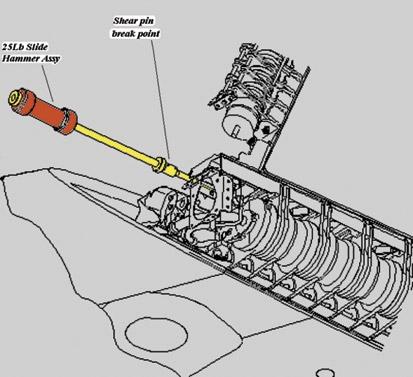
3 minute read
That’s Gonna Leave a Mark
was working as the flight-deck “scrubbie” driver. I hadn’t seen him in a while, considered him a good friend, and wanted to see how he was doing. I motioned for him to come over. We began to talk, and, without thinking about the fact we still were recovering aircraft, we took a seat on the tow bar that was hooked up to my jet—only a few inches from the foul line!
We had been sitting for only 30 seconds, but that was 30 seconds too long. When it registered how unsafe our action was, we turned to get up, but it was too late. One of the flight-deck coordinators already was en route to fix our mistake. He ordered us to report to flight-deck control.
Advertisement
After a brief one-way conversation with “Dog,” the CAG chief, my maintenance chief escorted me back to extremely proficient. In fact, we were at a point where night check was able to remove two outer wings and have them repaired by the contractor and ready for reinstallation before knock off. Fortunately, on this night, we only had to remove one: the starboard outer wing on aircraft 115.
After the initial step of removing the various panels and hardware from the wing, large wing pins must be removed before the outer wing is free of the wing-fold transmission. Each of these pins is approximately one meter long and made of solid titanium. Their removal requires the use of a common tool: the slide hammer.
The slide hammer looks exactly as its name implies. It is a sliding handle with stops on either end, and it’s threaded to one end of an extension shaft (see picture). The other end of the extension shaft is threaded to the wing pin being installed or removed. By moving the slide hammer back and forth to the desired stop, the wing pin is driven in or out of its housing. A shear pin resides in the threaded connection between the slide hammer and the extension shaft. The purpose of the shear pin is to my shop because I had been kicked off the flight deck for the night.
Because of my lack of attention to detail and unsafe action, I had let down my fellow line-team members, my immediate supervisor, my chief, and myself. Everyone else had to pick up my slack because I had dropped my guard. I chose an aircraft carrier’s flight deck as the place for a social call. I had been trained and qualified to work on the flight deck for quite some time, so I had no excuse for my actions.
I hope everyone will learn from my mistake. If you never think that complacency can or will happen to you, think again. It takes just a second to do the wrong thing and face the dog, or, worse, maybe not live to face anyone.
By AM1(AW) Steven Kedzie
Do you know what a left hook from Mike Tyson prevent damage to the wing pin by breaking and releasfeels like? I believe I do. I found out one night ing the slide hammer from the shaft if too much force is when least expecting it. imparted on it during hammering.
It was a typical mid-week night for the MainteAfter removing the panels and hardware, we used a nance Department. For more than a month, we had deck crane to support the wing and prepared to remove been removing the outer wings of our Rhinos to repair the first outer wing pin. I was standing about eight feet wing-fold bushing migrations, and, by this time, we were forward of the starboard leading edge to safely observe
Airman Hays is a plane captain with VFA-146.











